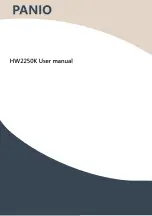
51
There
are
some
different
descriptions
for
the
port
trunking.
Different
manufacturers
may
use
different
descriptions
for
their
products,
like
Link
Aggregation
Group
(LAG),
Link
Aggregation
Control
Protocol,
Ethernet
Trunk,
Ether
Channel…etc.
Most
of
the
implementations
now
conform
to
IEEE
standard,
802.3ad.
The
aggregated
ports
can
interconnect
to
the
other
switch
which
also
supports
Port
Trunking.
Westermo
Supports
two2
types
of
port
trunking.
One
is
Static
Trunk,
the
other
is
802.3ad.
When
the
other
end
uses
802.3ad
LACP,
you
should
assign
802.3ad
LACP
to
the
trunk.
When
the
other
end
uses
non
‐
802.3ad,
you
can
then
use
Static
Trunk.
There
are
two
configuration
pages,
Aggregation
Setting
and
Aggregation
Status.
Aggregation
Setting
Trunk
Size:
The
switch
can
support
up
to
8
trunk
groups
and.
eEach
trunk
group
can
support
up
to
8
member
ports.
Since
the
member
ports
should
use
same
speed/duplex,
max
groups
for
100M
ports
would
be
7
groups,
and
3
groups
for
gigabit
ports.
Group
ID:
Group
ID
is
the
ID
for
the
port
trunking
group.
Ports
with
same
group
ID
are
in
the
same
group.
Trunk
Type:
Static
and
802.3ad
LACP.
Each
Trunk
Group
can
only
support
Static
or
802.3ad
LACP.
Choose
the
type
you
need
here.
Load
Balance
Type:
There
is
several
load
balance
types
based
on
dst
‐
ip
(Destination
IP),
dst
‐
mac
(Destination
MAC),
src
‐
dst
‐
ip
(Source
and
Destination
IP),
src
‐
dst
‐
mac
(Source
and
Destination
MAC),
src
‐
ip
(Source
IP),
src
‐
mac
(Source
MAC).
Proudly Distributed by Gross Automation | (877) 268-3700
www.westermosales.com | [email protected]
















































